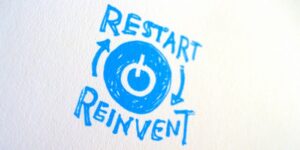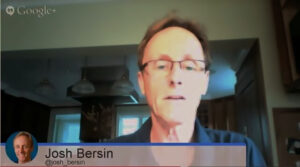
5 Ways To Simplify Your Hiring Process
Hiring managers and recruiters often have something to say about the behavior and lack of professionalism of candidates. But maybe it’s time to look in

Hiring managers and recruiters often have something to say about the behavior and lack of professionalism of candidates. But maybe it’s time to look in

As a business manager or owner of a company, there are many things you can do to reinforce employee empowerment with the self-will to strive for

The balance of power is shifting in the employer/employee relationship. What does it mean for the future of work? The #TChat crowd weighs in

The balance of power is shifting in the employer/employee relationship. What does it mean for the future of work? The #TChat crowd weighs in

The balance of power is shifting in the employer/employee relationship. What does it mean for the future of work? The #TChat crowd weighs in

The balance of power is shifting in the employer/employee relationship. What does it mean for the future of work? The #TChat crowd weighs in

A recent Gallup poll found that engaged employees display an unexpectedly strong commitment to their work. Almost two-thirds (63%) of workers whom Gallup classified as

The balance of power is shifting in the employer/employee relationship. What does it mean for the future of work? The #TChat crowd weighs in

It’s 9:15 a.m. and you’re just getting into the rhythm of your day. The phone rings, and on the other end of the line, one

“Did you ever see the film where the man is given spectacles, that make the world look upside down. He falls about the place but

The balance of power is shifting in the employer/employee relationship. What does it mean for the future of work? The #TChat crowd weighs in

The balance of power is shifting in the employer/employee relationship. What does it mean for the future of work? The #TChat crowd weighs in

Seriously, employee engagement isn’t spurred by casual Fridays or company picnics. Effective engagement efforts aren’t perks thrown at the workforce dartboard in hopes of hitting

The balance of power is shifting in the employer/employee relationship. What does it mean for the future of work? The #TChat crowd weighs in

The balance of power is shifting in the employer/employee relationship. What does it mean for the future of work? The #TChat crowd weighs in

The balance of power is shifting in the employer/employee relationship. What does it mean for the future of work? The #TChat crowd weighs in

It’s one thing to say you want top talent — but it’s another thing to make it happen. Here’s a glimpse at one proven method

The balance of power is shifting in the employer/employee relationship. What does it mean for the future of work? The #TChat crowd weighs in

Today’s global marketplace is fiercely competitive. But smart companies recognize their primary business advantage comes from within

“The war for talent is over, and the talent won.” What’s behind this revolution? Let’s discuss this week at #TChat events with talent management analyst, Josh Bersin

Successful leaders understand the power of human nature. What do they know about behavior that others can learn?

How do you know if a candidate is really ready to take on a job? Testing may be the fastest path to a reliable answer.

New research indicates that employees tend to love their employers — but don’t feel it in return. What can we do about that? The #TChat crowd weighs in

After years of working closely with leaders in every kind of organization, Ted Coine opens up about a missing piece in the leadership toolkit.

Everyone wants a fulfilling job. But how do we find it, and why should employers support us? Let’s talk about it at #TChat Events